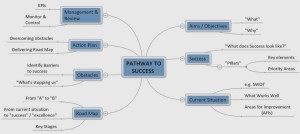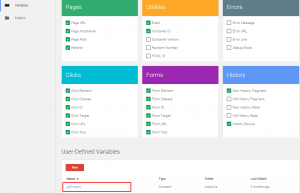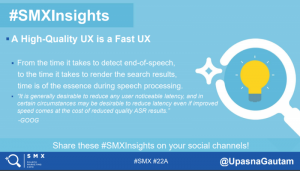
When it comes to building websites today, you have three choices – rented, template, or custom. In this two part series I will outline the headaches often associated with cheap websites and the benefits of a custom web presence.
Don’t worry, I plan to keep this fair and balanced.

The Perils of Cheap Websites
You can go with something cheap like a pre-built WordPress Theme, Wix or SquareSpace, or a rented website. I don’t fault any startup or small business with a shoestring budget for going this route. These are quick and cheap options to get the ball rolling.
But, in the long term, are these your best option? Your website is the hub of your marketing and sales efforts. Taking it serious now will pay off in the long term.
Let’s take a look at some of the more common issues associated with these cheap website options:
WordPress Themes
I’m not talking about custom themes like the ones we build (more on that in part two). I’m talking about the thousands of pre-built themes you can purchase and use as your base website CMS (Content Management System).
They’re cheap, usually around $ 150. These templates are built by independent theme authors or offered by companies as an add-on to their services. It’s a custom theme extended to work as a universal pre-built solution. Sometimes these are for a certain niche or they can be for the public at large.
Website Security and WordPress Updates
Pre-built WordPress themes are one template built for lots of different types of companies and individuals. It’s like having a mini-van/sports car/pick-up/RV/smart car. They’re overbuilt.
Simple maintenance and troubleshooting becomes way harder than it needs to be. For example, a major WordPress update is released to fix a security vulnerability identified in a previous version. We just saw this with the WordPress 4.7.3 update.
You have to hope that your template can handle this new update. We’ve run into this problem quite a few times with some of our website maintenance clients. We go to update WordPress and the whole thing falls apart.
The theme is not ready for the new version of WordPress. We reach out to the theme author to ask when the theme will be ready for the new update and… crickets.
Or maybe a need comes up that requires a plugin or some custom functionality. We’ve run into this as well. The theme either can’t handle the plugin or it breaks some other function on the site.
And sometimes trying to develop a custom solution, which would normally be straightforward, becomes a nightmare of hacks and workarounds to make the new functionality work within the theme.
Your Website’s Design – Look and Feel
Let’s not forget about design. Your website’s design can literally be the first impression you make with a prospect.
A website’s design – it’s “look and feel” – is a huge part of its user experience or UX. The layout can either lead them to a conversion point, or lead them to frustration.
So, let’s unpack that a little as it relates to the use of WordPress Themes. You’re making your first impression. Is a template that looks like 1,000s of other websites your best bet? Hardly the best way to differentiate and gain positive attention.
And with pre-built templates, you’re pigeonholed into a certain layout or structure. Creating any sort of flow that drives conversion could be difficult causing you to settle when you really need is to dial the UX in.
Without complete design control, you’ll struggle with things like brand consistency, brand awareness, conversion.
OK, so then what about Wix and Squarespace?
Wix and Squarespace
You might be more familiar with these options because they advertise like crazy. These are similar to pre-built WordPress themes in that you can pick a theme, customize it and poof, you have a website.
While you won’t struggle with updates and security like you would with a WordPress template, you will run into the same sorts of issues with design and UX.
The problem with these options is growth.
You’ve got your Wix or SquareSpace website. You’re marketing, writing content, and growing as an organization. Then, you realize you need something more from your website because your growth is so awesome. Go you!
This is great, right? What if Wix or SquareSpace don’t offer what you need? You’re in a closed system. These websites are not open and cannot be migrated. Developers can’t easily get in there and tinker with the code to build what you need.
So, you scrap all the work you’ve done on your website and have to start over. That’s a lot of time and money wasted.
If you’re stuck with one of these sites, keep this in mind for the future. Try mapping out expected growth and how this might affect your website needs so you don’t find yourself painted into a corner.
Rented Websites
These are similar to Wix and SquareSpace in that you pay a monthly fee instead of a fixed, upfront cost for your website. You’ll likely be using either an open source solution like WordPress or Drupal, or something proprietary.
Or you can use something like HubSpot’s CMS (what they call an OMS). You already use their Marketing Automation services. And they convince you to put all your assets in their system and move to their hosted website solution.
What if you need something more than what they offer for your “plan?” You are at their mercy. You cannot bring in another developer if you had one. You have to rely on their team to build what you need. And if it’s proprietary, things could get pricey.
Also, remember, this isn’t your website. The content is yours but the system used to edit and display that content belongs to the company you pay every month.
So, even if you wanted to take your WordPress website and move it somewhere else, you wouldn’t be able to. And if it’s proprietary software like HubSpot, you’d be starting over.
It might be a decent starting point because the upfront cost is so low. But, make sure you think about the future growth of your website.
Branding and User Experience (UX)
As discussed above with WordPress themes, your branding could suffer with any of these solutions. Design and UX matter a great deal to your branding efforts.
These “cheap website” options are one size fits all. They are not constructed specifically for your marketing goals.
You’ll end up with a website that looks like a template, or a Wix site, or a SquareSpace site. And guess what? You’re not alone. Your website, the hub of your marketing efforts, looks like 1,000s of other websites out there. And a bunch of those websites might belong to competitors.
Again, I’m not arguing that these cheap websites are a marketing kiss of death. I am saying that you need to look at the big picture and factor in your long-term plans.
Don’t make an important marketing decision based solely on the bottom line because it could cost you in the end. So, what then?
Whether today or sometime in the future, I would argue that a custom website solution needs to be part of your plan. In part two, I will details the many reasons why.
Digital & Social Articles on Business 2 Community(48)







